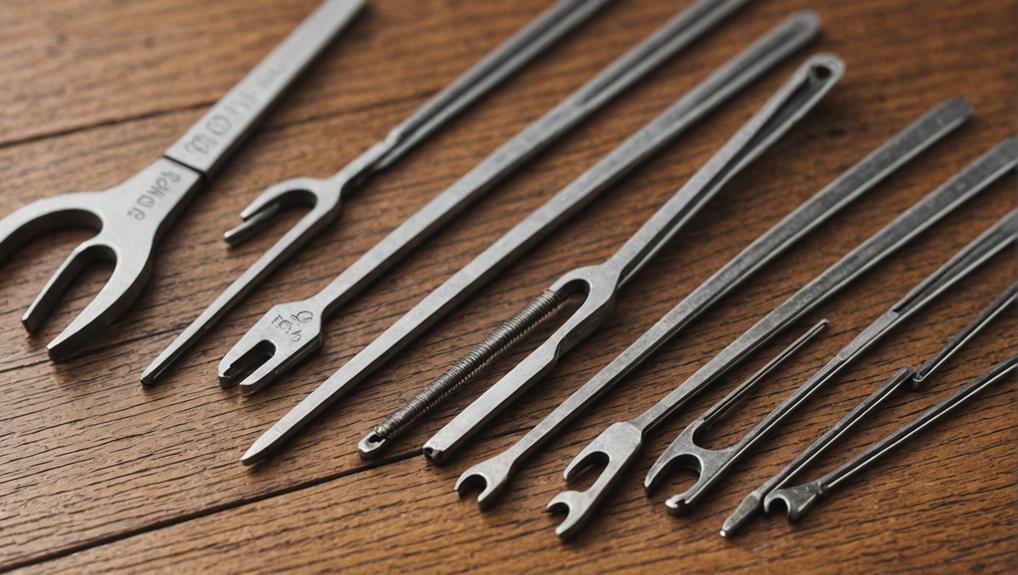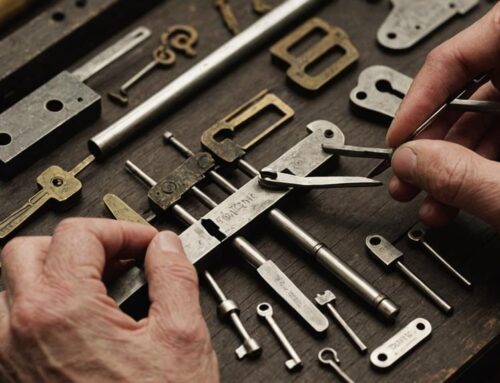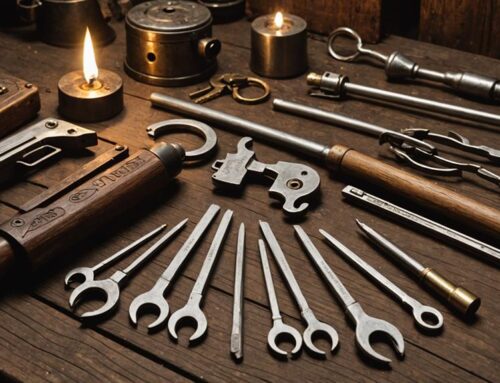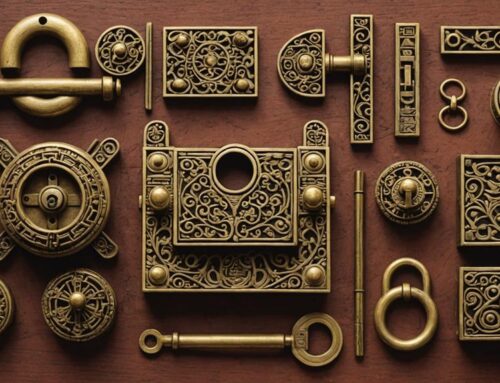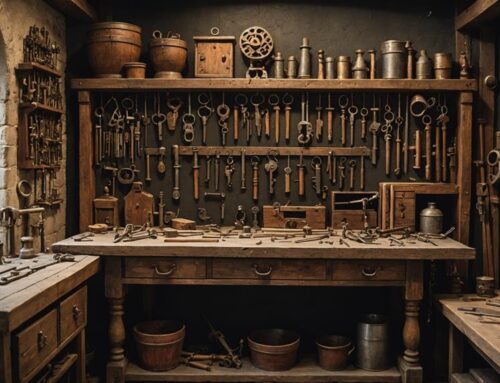As a beginner in lock picking, opt for a basic set that includes lock picks, tension wrenches, and rakes to enhance your learning curve. Hook picks offer precision with curved ends, while rake picks like city, Bogota, and snake rakes allow quick manipulation. Half diamond picks give versatility for individual pin control. Tension wrenches, such as short hook, L-wrench, and twisted wrench, are essential for creating necessary tension. Remember, adjusting your pressure based on the lock's feedback is key. Mastering these tools and techniques through practice will help you excel in the craft.
Key Takeaways
- Invest in a high-quality lock picking set for effective learning and proficiency.
- Choose versatile lock picks like hook, rake, and half diamond for different pin manipulation techniques.
- Select tension wrenches like short hook or L-wrench for varying lock types.
- Practice proper tension techniques with light pressure and adjust based on lock feedback.
- Explore reputable brands like SouthOrd, Peterson, Sparrows, or Multipick for quality lock picking tools.
Basic Lock Picking Set
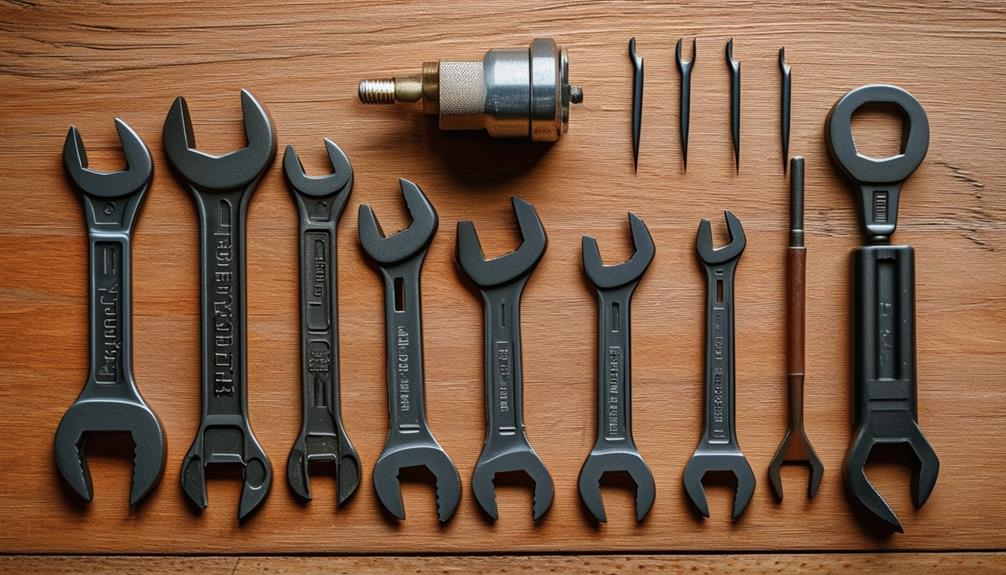
When starting your journey into lock picking, having a basic lock picking set is vital. These tools are your gateway into understanding the mechanics of locks and developing your skills.
A typical basic lock picking set consists of a variety of tools designed to manipulate the internal components of a lock without the need for a key. The most common tools found in such a set include lock picks, tension wrenches, and sometimes rakes.
It's important to choose high-quality tools, as they can greatly enhance your learning experience and effectiveness in picking locks. For more information on recommended brands and models, check out essential tools for experts.
Lock picks come in different shapes and sizes, each serving a specific purpose when it comes to manipulating pins within a lock.
Tension wrenches, on the other hand, are vital for applying rotational pressure to the lock cylinder, allowing you to set the pins in place. Rakes can be helpful for quick and simple locks, as they're designed to move multiple pins simultaneously.
Tension Wrench
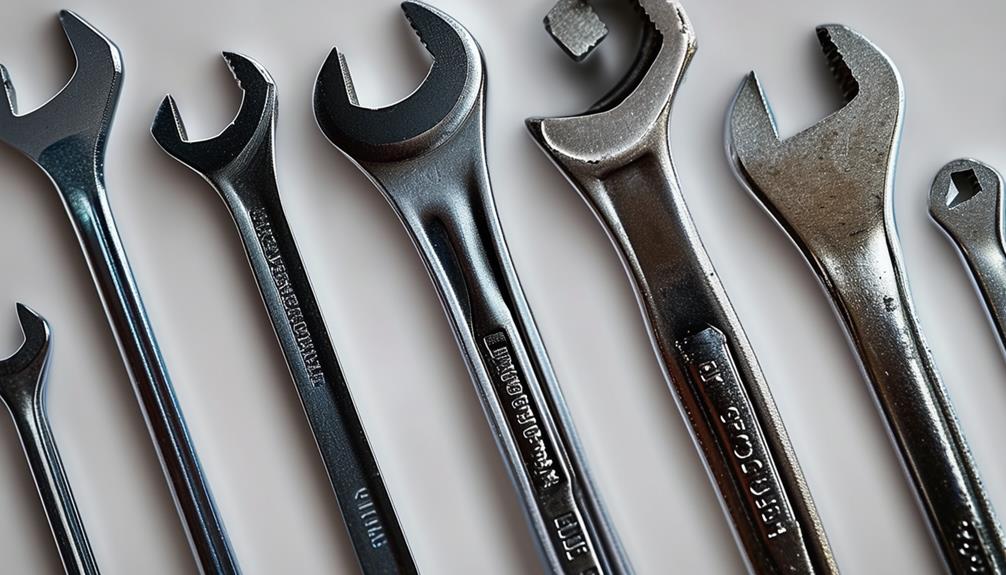
Now let's talk about the essential tool in lock picking – the tension wrench. This tool is pivotal as it applies the necessary force to the lock's plug, allowing you to manipulate the pins effectively.
You need to understand the basics of how a tension wrench works, the different types of tension wrenches available, and the proper technique to apply tension while picking a lock.
For those looking to enhance their skills, it's important to explore various lock picking techniques.
Mastering the use of a tension wrench is vital for successfully maneuvering through various types of locks.
Tension Wrench Basics
To effectively use a tension wrench in lock picking, it is essential to understand the basics of this important tool. The tension wrench, also known as a torque wrench, is used to apply rotational pressure to the lock cylinder. By using the tension wrench correctly, you can create tension within the lock, allowing the pins to be manipulated into place for releasing. Below is a table outlining the different types of tension wrenches commonly used by beginners:
| Type | Description | Best For |
|---|---|---|
| Short Hook | Small, precise, ideal for detailed work | Single pin picking |
| L-Wrench | L-shaped, provides good grip | Various lock types |
| Twisted | Bent at an angle, offers versatility | Pin and tumbler locks |
Understanding the characteristics and best uses of each type of tension wrench is important for successful lock picking. Experiment with different wrenches to find the one that suits your technique and the locks you are working on.
Types of Tension
For successful lock picking, understanding the various types of tension wrenches is essential.
When it comes to types of tension, there are mainly two categories to evaluate: constant tension and variable tension.
Constant tension involves applying a steady amount of pressure on the wrench throughout the picking process. This type can be helpful for beginners as it allows for a consistent feel of the pins within the lock.
On the other hand, variable tension involves adjusting the pressure on the wrench based on feedback received from the lock. This technique requires a bit more skill and experience to master but can be more effective in certain situations where a delicate touch is needed to set the pins correctly.
Experimenting with both types of tension wrenches will help you determine which one suits your lock picking style best.
Proper Tension Technique
Understanding the proper technique for applying tension with a tension wrench is fundamental to successful lock picking. As a beginner, mastering this skill is vital. The tension wrench is your key tool for maintaining pressure on the lock cylinder while picking the pins.
To start, insert the tension wrench into the bottom of the keyway, applying slight rotational pressure in the direction you'd turn a key to open the lock. Remember, the amount of tension is delicate; too much can bind the pins, while too little will prevent you from setting them.
One of the most valuable beginner lockpicking tips is to start with light tension and gradually increase as needed. As you pick up feedback from the lock – such as slight movements or clicks – adjust the tension accordingly.
Practice different amounts of pressure to develop a feel for the ideal tension required for each lock you encounter. With patience and practice, you'll improve your lock picking skills by mastering the art of applying proper tension with a tension wrench.
Hook Picks
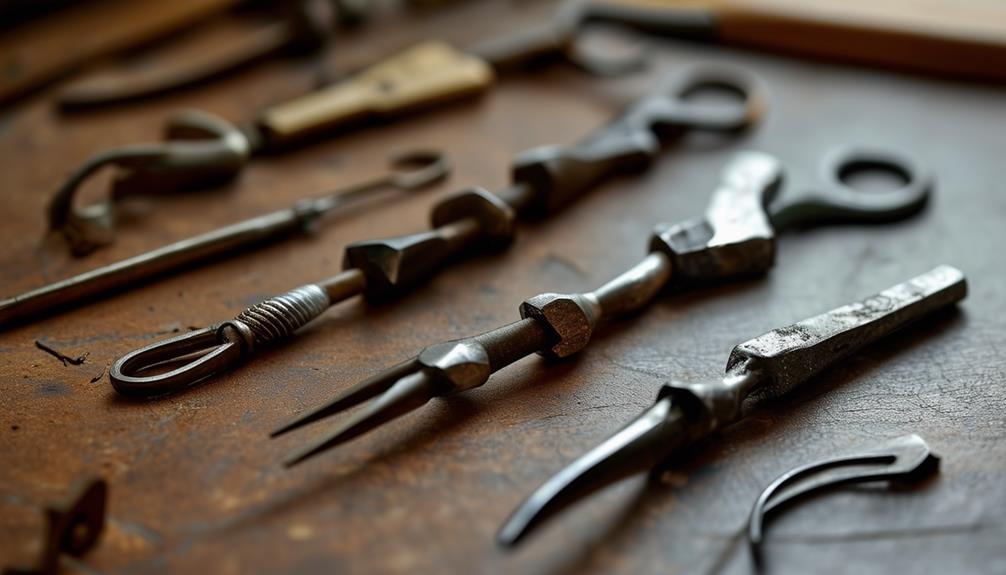
Among the various tools used for lock picking, hook picks stand out as versatile instruments that can be highly effective in manipulating pins within a lock.
These picks feature a curved or hooked end that allows you to individually lift pins to their correct height. Understanding the unique vulnerabilities of different locks can enhance your effectiveness with hook picks.
When using hook picks, it's vital to have a good feel for the pins inside the lock. Start by gently lifting each pin until you feel a small click or slight movement, indicating that the pin has set.
Vary the amount of pressure applied to the tension wrench while using the hook pick to find the right balance for each pin. Remember, the key to successful lock picking with hook picks lies in patience and practice.
It's important to develop a sense of touch and feedback from the tool to understand the inner workings of the lock. With dedication and skill, hook picks can become a valuable asset in your lock picking toolkit.
Rake Picks
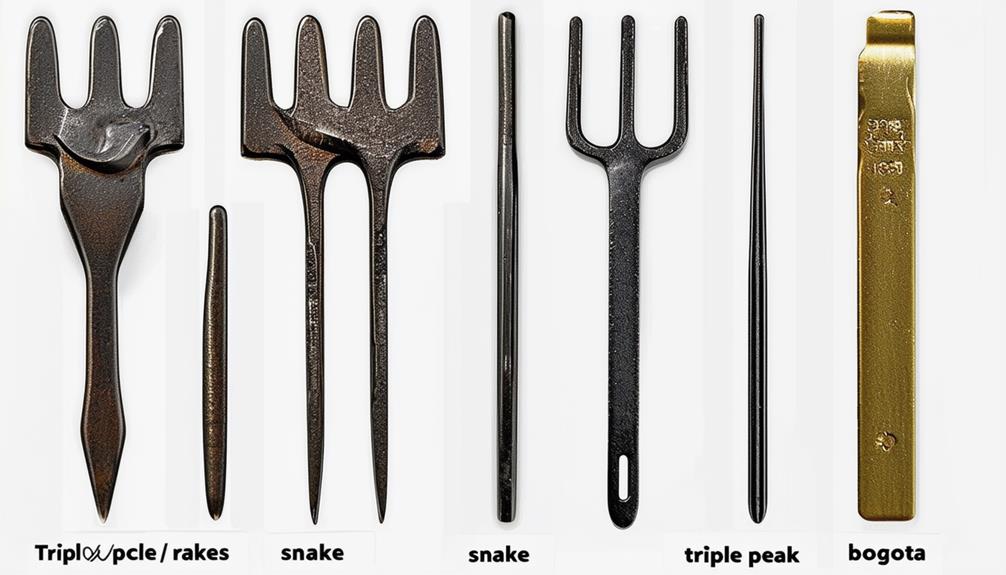
Now, let's talk about rake picks – an important tool in your lock-picking arsenal.
These tools are designed to quickly manipulate the pins within a lock, allowing for faster opening times. Rake pick types vary in design and function, so it's essential to find the right one for your needs.
For a deeper understanding of advanced lock picking techniques, mastering the technique and choosing from the best brands can greatly enhance your lock-picking success.
Rake Pick Types
When it comes to lock picking tools, one type that often stands out is the rake pick. Rake picks are designed with multiple peaks and valleys on their edge, allowing for quick and efficient manipulation of the lock pins.
There are several rake pick types to choose from, each serving a unique purpose. The most common rake pick types include the city rake, the bogota rake, and the snake rake.
The city rake is known for its simple design, making it a great choice for beginners. The bogota rake has a more complex shape with serrations, providing versatility in picking different types of locks. The snake rake, with its curved shape, is effective in quickly raking pins to set them.
When selecting a rake pick type, consider the type of lock you'll be working on and your level of experience. Experimenting with different rake picks will help you determine which type works best for you in different lock picking scenarios.
Technique Tips
As you work on mastering the art of lock picking with rake picks, honing your technique is key to achieving success.
When starting out in lock picking for beginners, using rake picks can be an effective method for opening locks quickly. To begin, insert the rake pick into the keyway and apply slight pressure to the tension wrench in the direction the lock would naturally turn.
With the rake pick, gently move it in and out while maintaining tension on the wrench. This repetitive motion mimics the action of a key moving in the lock, allowing the pins to set into place. Remember to start with light pressure and gradually increase it as needed.
Additionally, varying the speed and pressure of your raking motion can help you find the sweet spot to successfully release the mechanism.
Practice is key, so keep experimenting with different techniques to improve your skills in lock picking with rake picks.
Best Brands
Which brands stand out for their quality and reliability in the domain of rake picks for lock picking enthusiasts?
When looking for the best lock picking tools, consider the following reputable brands:
- SouthOrd: Known for producing high-quality rake picks that are durable and effective for various lock types.
- Peterson: Renowned for their precision-crafted rake picks that offer excellent performance and longevity.
- Sparrows: A popular choice among lock picking enthusiasts for their well-designed rake picks that provide great feedback.
- Multipick: Recognized for their innovative rake picks that cater to both beginners and advanced users with their ease of use and effectiveness.
When selecting rake picks for your lock picking endeavors, choosing from these top brands can guarantee that you have reliable tools that make the process smoother and more efficient.
Half Diamond Pick
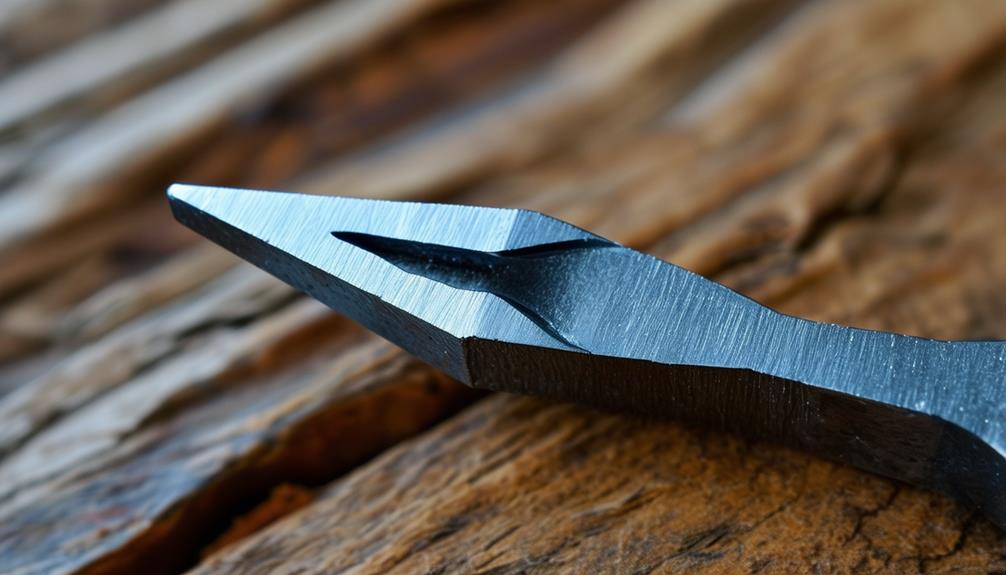
To effectively navigate through pin tumbler locks, the Half Diamond Pick is a versatile tool that can assist you in manipulating individual pins with precision. This tool is shaped like a half diamond, featuring a flat side and a rounded side. The flat side allows you to push pins up one at a time, while the rounded side enables you to rake across the pins to set them quickly.
Understanding the mechanics of pin tumbler locks is vital, as it enhances your ability to use the pick efficiently; for further insights, check out the mechanics of pin tumbler locks. The Half Diamond Pick is particularly useful for single pin picking, making it ideal for beginners looking to develop their lock picking skills.
When using the Half Diamond Pick, it's essential to apply gentle pressure and carefully feel for the binding pins. Once you identify a binding pin, use the pick to gently lift it to the correct height.
With patience and practice, you can effectively manipulate each pin and successfully open the tumbler mechanism.
How to Get Started
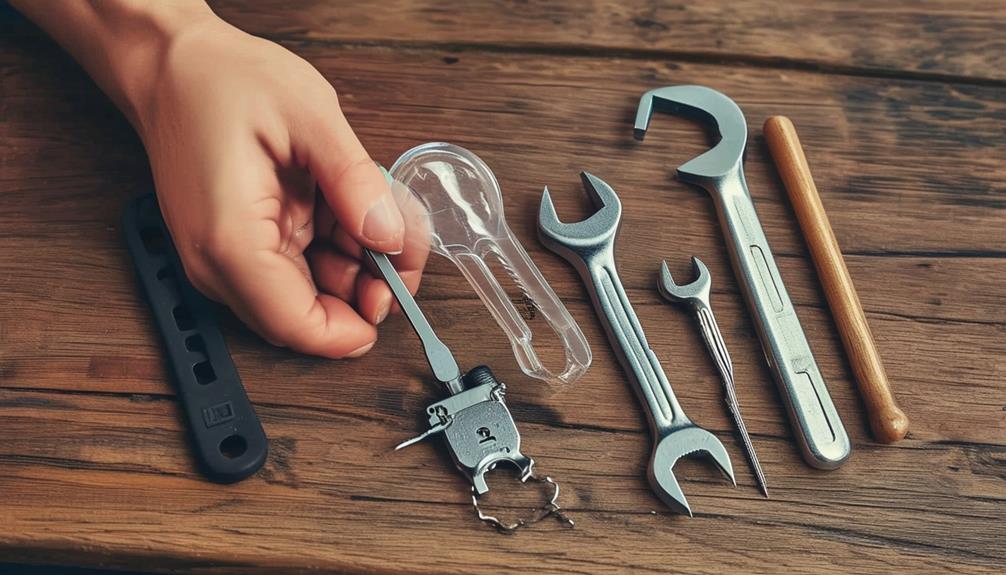
Getting started in the world of lock picking can be both exciting and rewarding. To begin your lock picking journey, consider investing in a lock picking starter kit. Understanding your skill level is important, as it can help you choose the right tools, which is vital for beginners.
Here are a few steps to help you kickstart your lock picking experience:
- Research and Educate Yourself: Spend some time learning about the basics of lock picking, the different types of locks, and the tools commonly used in the practice. Consider checking out a guide on choosing the right lock picking tools to match your skill level.
- Choose the Right Tools: Invest in a quality lock picking starter kit that includes necessary tools such as tension wrenches, hooks, and rakes. Having the right tools is critical for success.
- Practice Regularly: Lock picking is a skill that requires practice and patience. Set aside time each day to practice on different locks to improve your technique.
- Join a Community: Consider joining online forums or local lock picking groups to connect with experienced pickers, share tips, and gain valuable insights into the craft.
Frequently Asked Questions
Can Lock Picking Tools Be Used for Illegal Activities?
Yes, lock picking tools can be used for illegal activities.
While lock picking can be a legitimate skill for locksmiths and hobbyists, it's essential to understand the legal implications.
Misusing lock picking tools for unauthorized entry or theft is illegal and unethical.
Always make sure you have the appropriate permissions and legal authority before using lock picking tools to avoid any legal troubles.
Are There Any Legal Restrictions on Owning Lock Picking Tools?
When it comes to owning lock picking tools, you might hit a few legal roadblocks.
Some places have regulations in place to prevent misuse of these tools. It's like driving a car; you need a license to operate legally.
Always check your local laws to make sure you're in the clear.
Stay informed to avoid any unintentional run-ins with the law and enjoy your lock picking hobby responsibly.
Can Lock Picking Damage the Lock or Door?
Lock picking can potentially damage the lock or door if done incorrectly.
Applying too much force or using the wrong tools may result in broken pins or other internal components.
It's important to practice patience and precision to avoid causing harm.
Remember, the goal is to skillfully manipulate the lock without causing any harm to it or the door.
Take your time and be gentle to guarantee a successful lock picking experience.
How Do I Know Which Pick Is Best for a Specific Lock?
To know which pick is best for a specific lock, you must consider the type of lock you're dealing with.
Research common picks like hooks, rakes, and diamonds to understand their purposes.
Analyze the lock's complexity and mechanism to choose the right tool.
Experiment with different picks to see which one works best for each lock.
Practice and experience will help you determine the most suitable pick for specific locks.
Is Lock Picking a Skill That Can Be Easily Learned by Anyone?
Revealing the art of lock picking is like a dance, a rhythm you can master with practice.
Anyone can learn this skill with dedication and patience. By understanding the mechanisms and honing your technique, you'll find yourself effortlessly guiding through locks.
It's a craft that rewards persistence and precision. With the right mindset and practice, you'll soon find yourself adept at the subtle movements needed to conquer any lock.
Conclusion
To sum up, choosing the right tools for lock picking is like selecting the perfect paintbrush for an artist – essential for success. With a basic set, tension wrench, hook picks, rake picks, and a half diamond pick, you'll be well-equipped to start practicing your lock picking skills. Remember, practice makes perfect, so don't get discouraged if you don't succeed right away. Keep at it and you'll become a lock picking pro in no time!

